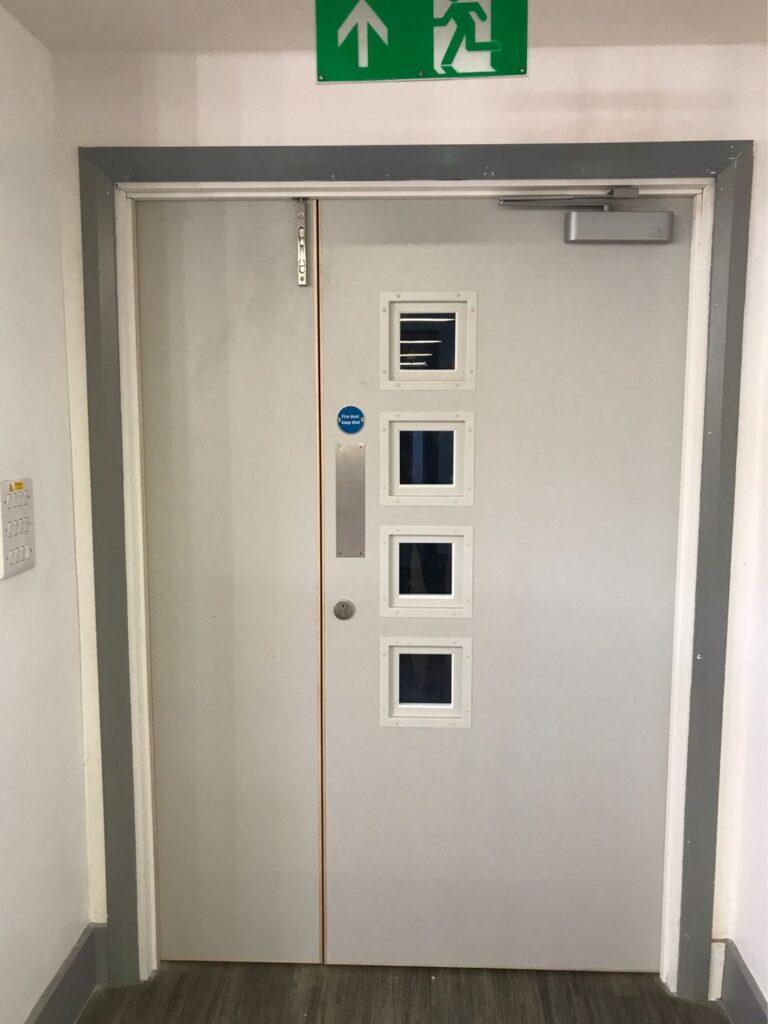A Guide To Passive Fire Protection
Key Takeaways
- Passive fire protection (PFP) includes built-in fire safety measures like fire barriers and fire doors.
- PFP differs from active fire protection, which needs human action, like using fire extinguishers.
- PFP components help contain fires and ensure safe evacuation routes.
- Fire risk assessments from FIS are essential for identifying elements and complying with safety standards.
Passive fire protection is a vital part of the defence against fire in any building. You may have heard of this term before, but if you’re unsure exactly what it is, how it differs from active fire protection and how important it is, then this article is for you. This month, we’re going to introduce passive fire protection and the role it plays in helping to save lives.
What is passive fire protection?
Sometimes referred to as PFP, passive fire protection is almost exactly as it sounds: provision for fire safety that is dormant within your building, but provides protection against fire should the worst happen. You don’t have to do anything; in the event of a fire, passive fire protection features will either already be in the right place or are activated by the heat of a fire. However, this only applies if your building has been professionally constructed and maintained with passive fire protection in mind.
Passive fire protection is also tied into The Building Regulations, making it a legal obligation for buildings to meet fire safety standards. This applies to both dwellings and buildings other than dwellings, with the regulations set out in Approved Document B in two separate volumes, both updated in 2020.
We’ll talk through the key elements of passive fire protection shortly, but first, a more detailed look at how this differs from active fire protection.

The difference between passive and active fire protection
Passive fire protection is not the same as active fire protection. The latter is more familiar to the everyday person, with fire extinguishers, blankets and break-glass call points all requiring an individual to do something in order to protect against fire – an active element. Passive fire protection, with the exception of perhaps fire doors, is unfamiliar since it is largely unseen and is not something people have to interact with in order for it to work.
Let’s look at what those features of passive fire protection are next.
The key elements of passive fire protection
The following are just some of the key PFP elements and how they work:
Structural fire surveys – The whole structure of your building and how it is designed is the starting point in passive fire protection in terms of construction. This includes the materials that are due to be used, along with compartmentation in floorplans, to create a structure that will slow down fires and allow enough time for safe evacuation.
Fire stopping surveys – This is a professional fire stopping survey to ensure compartmentation isn’t breached by gaps, cracks, holes and voids. Any of these could allow smoke and fire to spread, regardless of whether they were accidentally or intentionally created.
Fire barriers – These include a variety of fire-rated materials used to ensure compartmentation is maintained within a building. Batts, boards, curtains and collars are all gap-sealing materials used to block a developing fire, with varying levels of efficacy depending on the composition of the material.
Fire doors – A more commonly recognised element, fire doors come with different fire ratings based on how many minutes of resistance they provide when faced with a fire. These doors remain shut – or have automatic closers – to contain a fire and provide a safe route of evacuation in an emergency.
Intumescent paint – This paint is designed to coat important parts of a building’s structure. Expanding when exposed to high temperatures, it can delay the warping and bending of materials such as steel to allow for safe evacuation and the attendance of fire and rescue services – potentially securing the building from collapse.
Structural steel fire protection – The aforementioned paint counts towards structural steel fire protection, but this can also include cementitious/fibrous coatings or fire encasement boarding to protect important structural steel from losing its integrity.

Is a fire risk assessment part of passive fire protection?
While a fire risk assessment is not a physical, dormant way of protecting against the flames of a fire, it is a legal requirement for businesses and identifies key aspects of passive fire protection within your building. This is why a professionally conducted fire risk assessment forms a crucial part of your passive fire protection.
At FIS we can advise you for a full fire compartmentation survey to be carried out which will detail the fire lines of compartmentation throughout a building and outline any deficiencies.
Our most popular fire risk assessments (FRA’s) we carry out will be type 2 (non intrusive) and while some assessors will pick up on some elements of passive that they see it is not comprehensive.
At Fire Industry Specialists Ltd, we’re an IFC third-party certified company, providing passive fire protection services – fire doors, fire stopping surveys and more – to businesses and commercial operations nationwide, including Lincoln, Nottingham, Manchester, Birmingham and Sheffield.
For expert services and advice to help you stay legally compliant in the construction or maintenance of your premises, call our team today.



